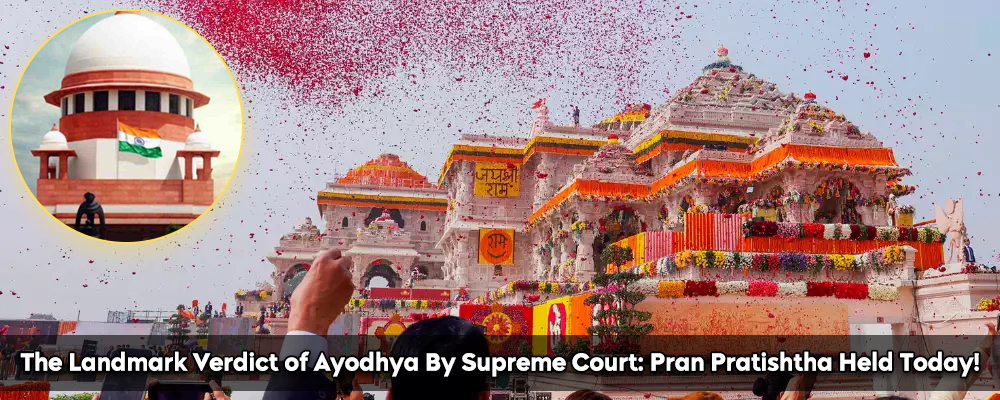Due to its length and the potential for imminent religious unrest in that area, the debate in Ayodhya, the sacred land of Lord Ram, which practically all Indians wish to see before humbly accepting the deathbed, rocked the whole country.
India is a secular nation by virtue of the very constitution that its forebears left behind, but there have been cases where the Supreme Court of India has, in its capacity, upheld what it considered a balanced ruling. The Ayodhya Verdict was one of those rulings.
Need A Legal Advice
The internet is not a lawyer and neither are you. Talk to a real lawyer about your legal issue

History of the Ram mandir Case
Pre Independence
- The First Mughal Emperor Babar is credited with building Babri Masjid in 1528. The Jaunpuri-style mosque was constructed in 1528 by Mir Baqi, the ruler of Mughal emperor Babur. It had three domes.
- Mahant Raghbir Das petitioned the Faizabad court in 1885 to get approval to build a temple next to the Babri Masjid. The request was turned down.
Post Independence
- In 1949, Inside the mosque, there were unexplained idols of Lord Ram. The Hindus desired to worship the idol, but the Muslim side insisted it was their creation. After there was violence, the management sealed the building while the idol was inside.
- Nirmohi Akhara submitted a plea in 1959 asking to be given ownership of the contested land.
- The High Court of Allahabad assumed jurisdiction over the title issue in 1989 and maintained the status quo.
- The Allahabad High Court started to consider the title suits in 2002. The Archaeological Survey of India (ASI) was ordered by the Allahabad High Court to carry out excavations at the disputed site.
- The ASI filed a study in August 2003 claiming that there were remnants of a sizable building that stood before the Babri Masjid.
- A majority ruling by the High Court in 2010 calls for the three-way division of the contested property among Muslims, Hindus, and Nirmohi Akhara.
- The year 2011 saw the SC put a stay on the high court’s ruling in response to the parties’ cross-appeals.
- The year 2019 saw the return of a five-judge Constitution Bench chaired by Chief Justice of India Ranjan Gogoi to hear the title appeals; however, he recommended initiating mediation first.
Ram Mandir Case Verdict by Supreme Court
- The contested land must be given to a trust so that the Ram Janmabhoomi temple can be constructed, according to a judgment from a five-judge Supreme Court panel.
- The Supreme Court cleared the path for the construction of the Ram temple by ruling that Ram Lalla Virajman, the Hindu god personified, was the rightful owner of the disputed 2.77 acres of property. The court recognized Virajman as a juristic being. Within three months, the Center needs to come up with a plan to create a trust and transfer the land to it.
- The court ordered the Center and the UP government to give the Sunni Central Waqf Board five acres of land at a different location in Ayodhya so they may build a mosque within three months.
The ‘Pran Pratishtha’ event at the Ayodhya Ram temple on January 22 has not been going on. The main guest of the occasion and the person who will officially open the Ram temple in Ayodhya is none other than Prime Minister Narendra Modi.
More than 7,000 people as per reports attended the consecration ceremony, the Ram Mandir Pran Pratishtha including notable entrepreneurs, politicians, and celebrities from the film industry.
The day of the Ram Mandir inauguration ceremony is a state-wide holiday observed by schools nationwide. A ‘half-day’ closure of central and state government offices, central institutions, and other important industrial establishments has also been announced by the Union administration for January 22, 2024.
One can talk to a lawyer from Lead India for any kind of legal support. In India, free legal advice online can be obtained at Lead India. Along with receiving free legal advice online, one can also ask questions to the experts online free through Lead India.





 Talk to a Lawyer
Talk to a Lawyer